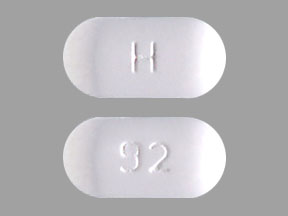
Actoplus Met Coupons & Savings Card – Discount Prices from $15.73
Brand for: Pioglitazone-metformin
My prescription
Edit
15-500MG, Pioglitazone-metformin (60 Tablets)
Select pharmacy

CVS
$24.54
COUPON PRICE
Walmart
$15.73
COUPON PRICE
Walgreens
$32.46
COUPON PRICE
Albertsons
$45.94
COUPON PRICEActoplus Met savings card
Show this card to your pharmacist
Walmart
$15.73
BIN
ID
PCN
GRP
019876
LHB1B0CF9B
CHIPPO
LHX
Powered by
More prescriptions for diabetes type 2
More prescriptions for diabetes type 2
Actoplus Met (Pioglitazone-metformin) dosage forms
Dosage Quantity Price from Per unit 15-500MG 60 Tablets $15.73 $0.26 15-500MG 30 Tablets $9.11 $0.30 15-500MG 90 Tablets $27.81 $0.31 15-500MG 180 Tablets $37.62 $0.21 15-500MG 270 Tablets $47.43 $0.18 15-850MG 30 Tablets $13.27 $0.44 15-850MG 60 Tablets $24.04 $0.40 15-850MG 90 Tablets $30.51 $0.34 15-850MG 180 Tablets $43.02 $0.24 15-850MG 270 Tablets $55.53 $0.21
| Dosage | Quantity | Price from | Per unit |
|---|---|---|---|
| 15-500MG | 60 Tablets | $15.73 | $0.26 |
| 15-500MG | 30 Tablets | $9.11 | $0.30 |
| 15-500MG | 90 Tablets | $27.81 | $0.31 |
| 15-500MG | 180 Tablets | $37.62 | $0.21 |
| 15-500MG | 270 Tablets | $47.43 | $0.18 |
| 15-850MG | 30 Tablets | $13.27 | $0.44 |
| 15-850MG | 60 Tablets | $24.04 | $0.40 |
| 15-850MG | 90 Tablets | $30.51 | $0.34 |
| 15-850MG | 180 Tablets | $43.02 | $0.24 |
| 15-850MG | 270 Tablets | $55.53 | $0.21 |
Actoplus Met Warnings
This safety information outlines important risks and precautions associated with the use of Actoplus Met (pioglitazone/metformin). It is crucial to understand these details and discuss any concerns with your healthcare provider.
Heart Failure Risk: Actoplus Met can cause fluid retention, leading to or exacerbating heart failure. Be vigilant for symptoms such as sudden weight gain, swelling in legs, ankles, or feet, and difficulty breathing. If these occur, contact your doctor immediately. This medication is not advisable for individuals with a history of certain types of heart failure.
Lactic Acidosis Warning: Although rare, the accumulation of metformin can lead to lactic acidosis, a serious condition. This risk increases with age (65 or older), kidney or liver issues, heart problems, heavy alcohol consumption, imaging procedures with contrast dye, recent surgery, or certain medications. Seek urgent medical help if you experience unusual fatigue, dizziness, severe drowsiness, chills, blue/cold skin, muscle pain, breathing difficulties, irregular heartbeat, or stomach pain with nausea/vomiting/diarrhea.
Hypoglycemia Caution: Actoplus Met may lower blood sugar levels, especially when combined with insulin or sulfonylureas like glipizide. Inform your healthcare provider of all diabetes medications you are taking to adjust dosages and minimize hypoglycemia risk.
Liver Damage Alert: Some patients on pioglitazone have experienced liver damage. Your doctor will conduct liver function tests before starting treatment. Report symptoms such as loss of appetite, upper stomach pain, fatigue, dark urine, or yellowing of skin/eyes immediately.
Bladder Cancer Consideration: There is mixed evidence regarding pioglitazone and bladder cancer risk. Actoplus Met is not recommended for those with current bladder cancer. Discuss past bladder cancer history with your doctor to weigh risks and benefits.
Bone Fracture Risk: Pioglitazone may increase the risk of bone fractures, particularly in females. Consult your doctor about measures to maintain bone health during treatment.
Eye Health: Some users have reported eye swelling (macular edema). Notify your doctor or eye specialist if you experience blurred or decreased vision and adhere to regular eye exam schedules.
Vitamin B12 Levels: Long-term use of the medication may lower vitamin B12 levels, potentially causing anemia. Regular blood tests to monitor B12 levels are advised. Symptoms like fatigue, dizziness, low appetite, or tingling in extremities should be reported to your doctor.
Contraindications: Do not use Actoplus Met if you have severe kidney problems, certain types of heart failure, or metabolic acidosis, including diabetic ketoacidosis. Consult your healthcare provider if these conditions apply to you.
If you have any questions or need further clarification, reach out to your healthcare provider to ensure safe and effective use of Actoplus Met.
Actoplus Met Side Effects
This medication can cause several side effects, some of which are common and mild. These include nausea, vomiting, stomach upset, diarrhea, weakness, sore throat, muscle pain, weight gain, headache, tooth problems, and a metallic taste in the mouth. Although these effects are typically not severe, it's important to inform your healthcare provider if they persist or worsen. Infrequently, individuals may experience swelling, upper respiratory tract infections, or low blood sugar, especially when combined with other diabetes medications. Symptoms of low blood sugar include sudden sweating, shaking, fast heartbeat, hunger, blurred vision, dizziness, or tingling hands and feet. To prevent these, maintain regular meals and carry glucose tablets or a quick source of sugar. Some side effects are rare but serious, necessitating immediate medical attention. These include symptoms of heart failure such as shortness of breath, unusual swelling, or sudden weight gain; signs of lactic acidosis like fast breathing, upset stomach, or feeling cold; and bladder issues such as pain during urination or blood in urine. Liver problems can manifest as persistent nausea, vomiting, stomach pain, loss of appetite, dark urine, or yellowing of the skin or eyes. Additionally, an eye condition known as macular edema may present with blurry or changing vision. Allergic reactions to this drug are uncommon but can be severe. Seek immediate help if you experience rash, itching, swelling of the face, tongue, or throat, dizziness, or trouble breathing. Always consult your healthcare provider if you notice other effects not listed here.
Actoplus Met Interactions
When taking Pioglitazone, it's important to be aware of potential interactions with other medications, as they can influence how effectively pioglitazone works. For instance, drugs like Gemfibrozil and Rifampin can alter the elimination of pioglitazone from your body. Additionally, beta-blockers such as metoprolol, Propranolol, and glaucoma medications like Timolol may mask the signs of low blood sugar, specifically the rapid or pounding heartbeat that typically signals hypoglycemia. However, other symptoms of low blood sugar, such as dizziness, hunger, and sweating, are unaffected by these medications.
Furthermore, numerous medications can impact your blood sugar levels, complicating their management. Before you begin, discontinue, or modify any medication, it’s crucial to consult with your doctor or pharmacist to understand how it might affect your blood sugar control. Regular blood sugar monitoring is advised, and you should report any signs of high or low blood sugar to your doctor immediately. Your healthcare provider might need to adjust your diabetes treatment plan, which could include medication, exercise, or dietary changes.
Actoplus Met, a combination of pioglitazone and Metformin, also has potential drug interactions. It is vital to inform your healthcare providers about all medications and supplements you're taking, whether they're prescribed, over-the-counter, or herbal. Some medications, such as certain contrast agents used in imaging tests, should generally be avoided with Actoplus Met due to interaction risks. Other medications might require dose adjustments if used in combination due to their effects on blood sugar levels or potential side effects. Always follow your doctor's guidance on managing these interactions to ensure safe and effective treatment.
What is Actoplus Met used for?
Actoplus Met is used to help control blood sugar levels in individuals with type 2 diabetes. It combines two medications, pioglitazone and metformin, to improve insulin sensitivity and decrease glucose production in the liver.
How much does Actoplus met cost?
The cost of Actoplus Met can vary depending on factors such as the pharmacy, location, insurance coverage, and whether a generic version is available. Without insurance, the price can be quite high, but with insurance or discount programs, the cost may be significantly reduced. It is advisable to check with local pharmacies or online resources for the most accurate and up-to-date pricing information.
Does pioglitazone metformin cause weight gain?
Pioglitazone, a component of the combination medication pioglitazone/metformin, is known to potentially cause weight gain in some individuals. However, metformin, the other component, is generally associated with weight neutrality or even weight loss. The overall effect on weight can vary depending on the individual's response to the medication. It is important for patients to discuss any concerns about weight changes with their healthcare provider.
